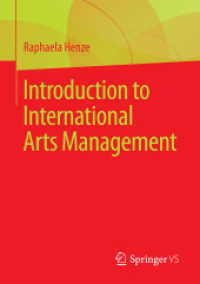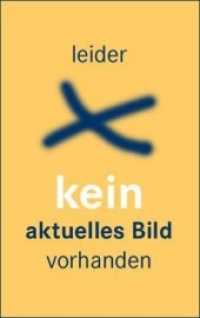- ホーム
- > 洋書
- > 英文書
- > Philosophy
Full Description
A realist, particle-based view of quantum theory—where the wavefunction no longer plays a central role—offers a clear, commonsense alternative to dominant metaphysical views.
This book explores the metaphysics of quantum theory through a lens of scientific realism—the belief that successful scientific theories describe reality. It critically evaluates various interpretations, including structural realism, wave function realism, and the many-worlds view, highlighting their limitations. Valia Allori proposes a "spatiotemporal foundational ontology" approach, grounded in particles as fundamental entities evolving in three-dimensional space and time, following uniform, symmetric laws. This view is exemplified by Bohmian mechanics (pilot-wave theory), offering a constructive, commonsensical explanation of quantum phenomena. The wave function, in this framework, is not a physical object but plays a functional, law-like role in explaining interactions. Further, the book advances a radical thesis: fundamental particles lack intrinsic properties like mass or charge and are instead "bare" objects distinguished only by the laws governing them. This thesis allows a middle path between traditional object-based metaphysics and eliminative structuralism. Ultimately, the author argues that had physics developed more rationally, instead of following a historical path shaped by contingent choices, the pilot-wave theory might have been the dominant interpretation, minimizing the proliferation of speculative alternatives.
Contents
Table of Figures
Prologue
Acknowledgements
Chapter 1: Scientific Realism and The Classical World
Chapter 2: Quantum Mechanics and The Structuralist Revolution
Chapter 3: The Measurement Problem and Wave Function Realism
Chapter 4: A Spatiotemporal Ontology for a Symmetry Preserving Constructive Theory
Chapter 5: Demystifying the Wave Function
Chapter 6: A Metaphysics of Bare Objects
Chapter 7: "What if?"
Epilogue
References







